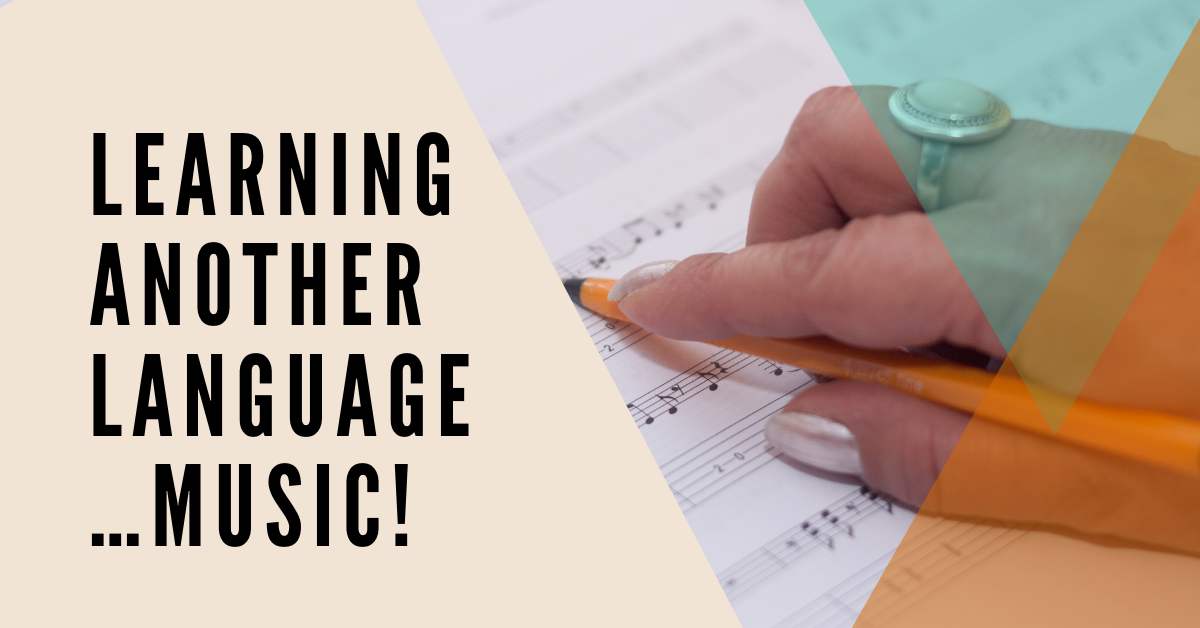Learning Another Language...Music!

Learning Another Language...Music!
I’m not the first person to draw the correlation between music and language. However, I would like to break down the relationship I see between music and language. More important, I’d like to give some of my thoughts on how these relationships affect how we relate to our instrument.
Language is composed of many smaller parts. We have stories, paragraphs, vocabulary and letters. We form these parts into a whole to communicate something to someone. That “someone” might be us in form of a note on the fridge. Alternatively, that someone might turn out to be someone we have never met before.
We use adjectives to “spice up” our language with more emotion. Structure and Form are commonplace in language. O.K. So how does this relate to music and why does it matter?
Music obviously can be broken into smaller parts as well. These smaller parts also correlate quite well with language. Here is an example:
Story = Song
Paragraph = Musical Phrase
Vocabulary = Licks or Motives
Letters = Specific Notes
Adjectives = Dynamics
Structure = Form
See, they go together quite well. So, on to why this means anything at all. I like to ask students to imagine a globe. When you look at a globe, you can only see part of it. To really see the globe’s entire surface, you need to spin it. Learning music is that globe. To really understand music, you want to look at it from different angles. This is why you might study with a private teacher. They can usually help you to see music in a different way.
Looking at music as a language helps us to apply some basic principles. You learned a language, right? I will assume that you said yes. Now, pause for a second because this is really important. Often, students will say to me “I can’t do this!” I will then show them a different “angle” on the globe of music so that they see it differently. What follows next is that they can usually do what they were just saying they couldn’t do, in a matter of a few minutes.
Music is such a mind game! So, remember, if you can learn a language (which you did as a child) then you can learn music. Now, you might say “Yeah, but I need to press notes and play hands-together and....” I’d say, sure that’s true. But you can talk and walk at the same time, right? When in a group, you interact, follow and react to what others are saying. My point is that language (talking) can be difficult, but you have had years of experience doing it.
“Alright, I now realize if I can talk, then I can eventually learn to play an instrument. But, how does that help me right now?” Great question. Answer, it doesn’t really help much at all. Well, that’s not completely true. It helps you to see a different part of the “globe”. But, if you really want this new angle to help you, think about how you learned language.
We all learned a language through repetition, listening and trial-and-error. You learned your first language probably when you were very young. You probably had many people who repeated the same word over-and-over to you. And, you definitely tried putting words together on your own. Eventually, you learned what works and what doesn’t.
You can use this same approach with music.
Repetition. If you are having problems with a piece, break it into smaller “chunks” and practice those chunks over-and-over again. Next, try putting two chunks together, then three, and so on. How long should a chunk be? It could be two notes, two measures or two lines of music. It really depends on how much you can handle.
Listening. To learn how to play an instrument, you should listen to others who can play that instrument very well. This could be a neighbor, a CD, a live performance or someone on the Internet. The point is, listen!
Trial-and-error. This is the ‘big one’. Trial-and-error is what gets a lot of people stuck. In my almost two decades of teaching music, I’ve noticed that students are always looking for that